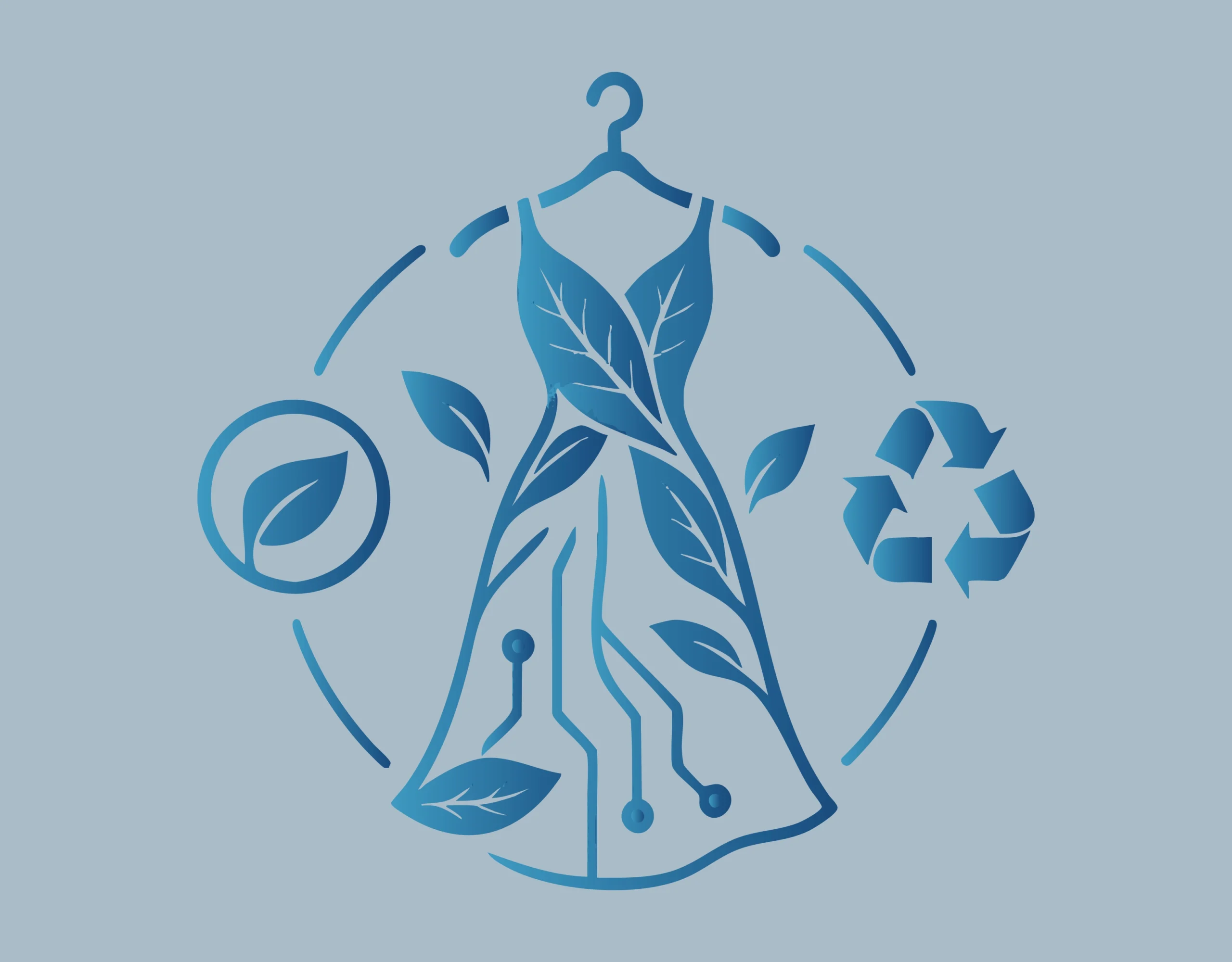Preparing for EU’s Eco-design for Sustainable Products Regulation (ESPR)
As the EU’s Eco-design for Sustainable Products Regulation (ESPR) comes into full effect in 2025, fashion brands find themselves at a critical crossroads. The regulation requires that all products placed on the EU market include transparent, standardized, and easily accessible information about their sustainability and environmental impact. This is where the Digital Product Passport (DPP) comes in, offering fashion businesses both a compliance tool and an opportunity to build trust and transparency.While many conversations around DPPs revolve around textiles and raw materials, it is fashion brands, not just producers, that must prepare to implement, manage, and communicate this data across their supply chains. It’s not only about checking a box, it’s about adopting a smarter, more responsible way of working that enhances the brand-consumer relationship.
What is a Digital Product Passport (DPP)?
A Digital Product Passport (DPP) is a digital record that accompanies a product throughout its lifecycle, storing information such as:
- The origin of raw materials
- Manufacturing processes and locations
- Sustainability and ethical certifications
- Maintenance, repair, reuse, and recycling information
For fashion brands, DPPs are accessed via QR codes or RFID tags, allowing both business partners and consumers to trace garments from fiber to hanger.
| Use case: The garment journey Imagine a customer scans a QR code on a jacket. They can see:
|
Why DPPs matter to fashion brands more than textile producers
While textile producers focus on the raw material, fashion brands are held accountable for the entire lifecycle of a garment, from sourcing and production to distribution and post-consumer phases.
Key differences:
| Aspect | Textile producers | Fashion brands |
|---|---|---|
| Primary focus | Material sourcing | Full product lifecycle |
| End-user responsibility | None | High |
| Marketing impact | Low | High. Sustainability influences purchase decisions |
| Supply chain complexity | Lower | Higher. Multiple suppliers & product variations |
Here’s what sets brands apart:
- Consumer-facing responsibility: Brands must communicate sustainability directly to consumers.
- Broader supply chain oversight: Because brands rely on global suppliers, they need tools to track components at BOM level.
- Brand equity & trust: Transparency of the whole process directly affects customer loyalty and brand perception.
ESPR requirements: What fashion brands must know
The EU’s ESPR regulation is mandatory for brands selling in the EU. Here’s what brands must be prepared for:
| Requirement | What it means for fashion brands |
|---|---|
| Product-leve data | Brands must provide item-specific environmental and ethical data. |
| Accessibility | DPPs must be accessible to regulators, partners, and end consumers via QR code or link. |
| Interoperability | Systems must align with EU-wide data formats and open standards. |
| Continuous updates | Brands must update DPPs whenever new certifications or supplier data become available. |
| Pro tip: Start by mapping your current supply chain data availability. Understanding gaps early will make compliance much smoother. |
To meet these requirements effectively, brands can’t rely on isolated data systems. Instead of each brand investing in standalone solutions for traceability and compliance, a more efficient and future-ready approach is to collaborate through shared platforms, such as those provided by Ettos.
Fortude x Ettos: Enabling digital product passports at scale
Fortude partnered with Ettos, a UK-based traceability platform, to offer a scalable, integrated solution for fashion brands adopting DPPs.
Having a centralized solution will enable faster alignment with regulatory standards and encourage supply chain-wide consistency. Here’s howEttos’ ecosystem supports ESPR compliance:
| Feature | How it helps brands |
|---|---|
| QR-based DPPs | Easily deliver product-level data to consumers and auditors. |
| Traceability mapping | Visualize supply chains from raw material to final product. |
| BOM-level tracking | Full traceability for even labels, buttons, or zippers. |
| Audit & compliance tools | Central hub for managing certifications and social audits. |
| Real-time evidence tracking | Validate sustainability claims with time-stamped proof. |
Behind the tech: Ettos highlights
- B2B portal for brands to manage traceability and supplier compliance
- B2C-facing app that let’s consumers scan a QR code and view a full product profile
- Interactive supply chain maps to visualize a garment’s journey
- Recyclability and circular economy program info embedded into each product profile
What should fashion brands do now?
Here’s a step-by-step action plan to get started:
- Audit your supply chain- Identify the traceability and compliance data you already have and where gaps exist.
- Define DPP data fields- Decide what product information is most valuable to consumers and regulators.
- Implement traceability software- Integrate with platforms like Ettos to collect and manage DPP-relevant data.
- Train internal teams- Ensure product teams, sourcing, and marketing understand how DPPs work.
- Engage with suppliers- Collaborate with suppliers to gather accurate and verifiable data.
- Communicate proactively- Use DPPs to tell your sustainability story on eCommerce platforms, labels, and packaging.
- Measure & improve continuously- Review and refine DPP strategies based on consumer feedback and internal audits.
DPPs as a strategic advantage
The Digital Product Passport for fashion is not just about regulation. It’s a unique opportunity for brands to differentiate, earn consumer trust, and build a future-proof supply chain.
Brands that proactively adopt DPPs will not only stay ahead of regulatory demands but also build deeper connections with their audience, reduce environmental risks on their end, and improve operational agility.
As the regulatory landscape matures, it is likely that the industry will move towards a standardized platform, potentially mandated by the government or industry. Therefore, making early adoption of interoperable systems like Ettos will be a strategic advantage.
If you are ready to future-proof your fashion brand, let Fortude help you digitize your supply chain and meet EU ESPR head-on. Talk to our Digital Transformation Advisory team.
Ready to lead the sustainable future of food?
Explore Fortude’s Digital Transformation Advisory Services.FAQs
Yes, Digital Product Passports (DPPs) are a crucial requirement under the European Sustainability Product Regulation (ESPR). For most product categories, including apparel, DPPs are not optional, they are integral to achieving ESPR compliance. These passports aim to improve product transparency, circularity, and traceability by capturing and sharing standardized product information across the entire lifecycle.
Yes, under ESPR and DPP expectations, brands are expected to achieve end-to-end supply chain visibility. This goes beyond just Tier 1 manufacturers, it includes tracing inputs down to the raw materials, trims, zippers, dyes, and other components. The goal is full transparency to validate sustainability claims, support ethical sourcing, and provide consumers and regulators with reliable data.
Absolutely, with growing environmental awareness, consumers are increasingly seeking transparency about how and where their products are made. Scannable QR codes on product labels allow customers to quickly access details about materials, sourcing, care instructions, and recyclability. This kind of transparency not only builds trust and brand loyalty, but also empowers consumers to make more sustainable choices.
Fortude helps fashion and apparel brands implement DPPs by providing digital transformation solutions that streamline data capture, integration, and reporting across the supply chain. Fortude also integrates with platforms like Ettos, which specialize in DPP and supply chain traceability, enabling brands to meet compliance requirements while improving operational efficiency and customer engagement.
In cases where suppliers fail to provide required product or sustainability data, it’s critical to use digital compliance frameworks to flag those gaps and initiate follow-up. Brands can use tools that track and remind suppliers about documentation, certifications, and required disclosures. It is of utmost importance to ensure that transparent data collection frameworks are in place to remain compliant and meet the standards.
Yes, DPPs have the potential to significantly reduce return rates by helping consumers make more informed decisions at the point of purchase. When buyers have access to accurate product information, such as fabric composition, origin, certifications, sizing details, and care instructions, theyare less likely to purchase items that don’t meet their expectations or needs. This improves customer satisfaction and supports more sustainable consumption habits.
- Preparing for EU’s Eco-design for Sustainable Products Regulation (ESPR)
- What is a Digital Product Passport (DPP)?
- Why DPPs matter to fashion brands more than textile producers
- ESPR requirements: What fashion brands must know
- Fortude x Ettos: Enabling digital product passports at scale
- What should fashion brands do now?
- DPPs as a strategic advantage
- FAQs
Subscribe to our blog to know all the things we do


